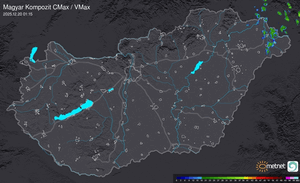Földtan
Budapest (Ördög-árok Valley)–Soroksár–Alsónémedi–Kecskemét fault: is a line still active at present, along which the quake of 1956 occurred with focus at Dunaharaszti (Photo 1–2). At the mountain section (Ördög-árok) evidence of the fault provided by orographic positions of the terrace valleys, superimposing travertines and cave horizons. In the plain section (Pest Flat, northern part of the Danube–Tisza Interfluve) deformed shape of late Pleistocene– Holocene Danube channels (terraces II/a and II/b) and a former south-east direction of flow turning into south and then south-west and a sharp turn of Dong-ér Stream add to the morphological features to confirm its existence.Ördög-árok fault: connecting a row of intramontane basins in the Buda Hills; orographic position of travertines and deformed terraces testify to movements during the Pleistocene and Holocene. Its continuation is the channel of the Soroksár Danube branching south-eastward with quake focuses at Dunaharaszti and Alsónémedi.”
(Hungarian Geographical Bulletin 60 (3) (2011) 233–245.Relationships between geomorphology, neotectonics and earthquakes in the Danube Plain between Ercsi and Madocsa and on the Danube–Tisza InterfluveFerenc SCHWEITZER, János BALOGH, László TÓTH and Péter MÓNUS)
(Hungarian Geographical Bulletin 60 (3) (2011) 233–245.Relationships between geomorphology, neotectonics and earthquakes in the Danube Plain between Ercsi and Madocsa and on the Danube–Tisza InterfluveFerenc SCHWEITZER, János BALOGH, László TÓTH and Péter MÓNUS)





